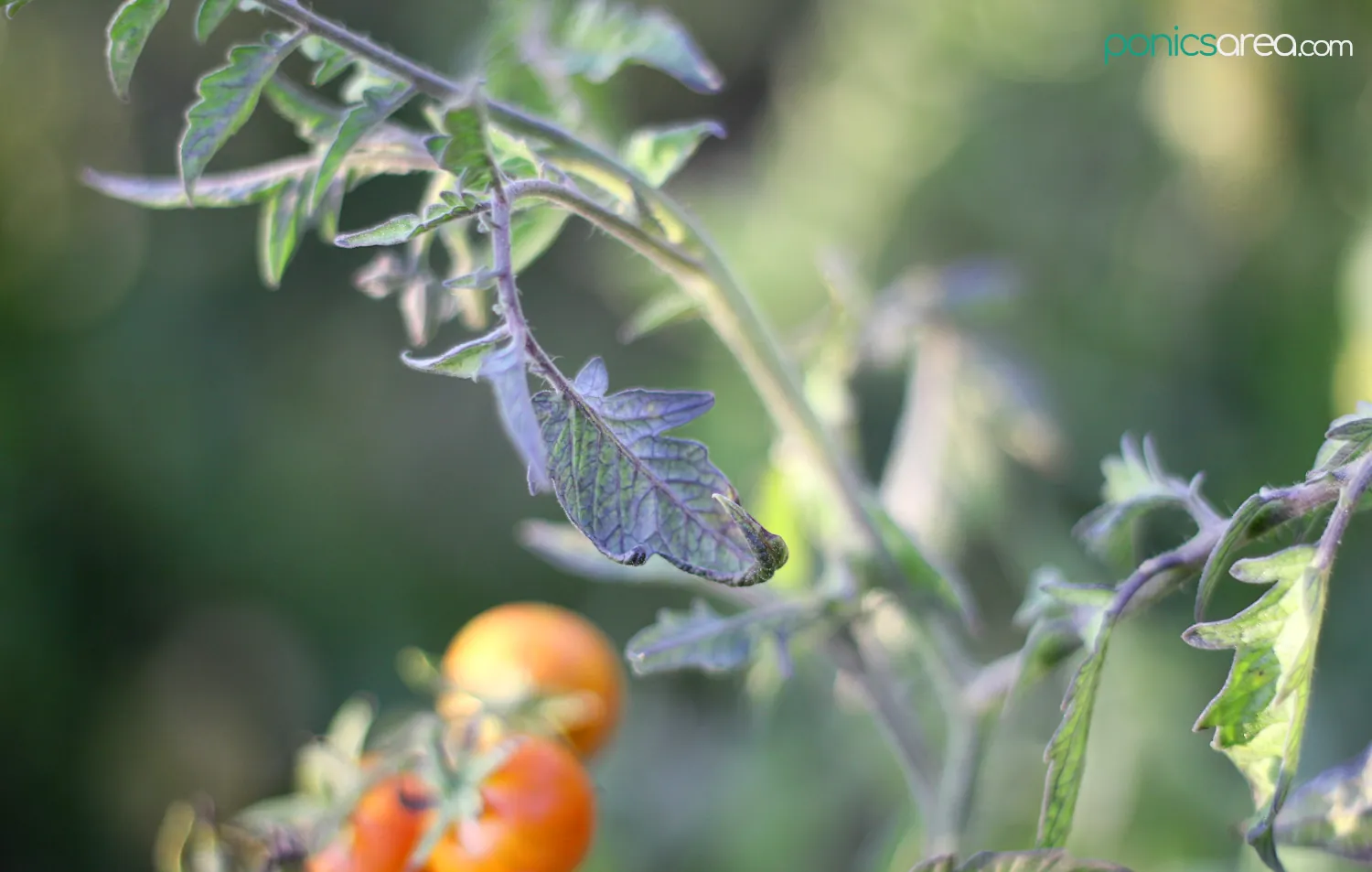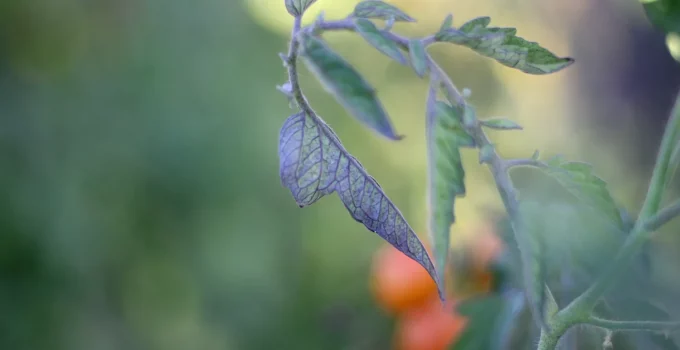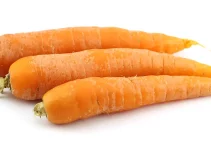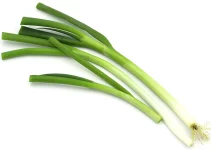What factors could contribute to tomato leaves turning purple? Spoiler alert: it is usually caused by some kind of nutrient deficiency.
The good news is that, in general, tomato leaves turning purple is not a major cause of concern. Nutrient deficiencies are pretty easy to fix in a gradual manner so that it won’t affect your yield. It’s not as serious as white cucumbers.
But first I want to tell you that there are some plants that are awesome when their leaves turn purple and it’s actually a good thing – I’m talking about succulents. Or the purple basil variety, which is really pretty.
One more thing before getting back to our subject: if you want an alternative to soil crops, check out my article on how to grow hydroponic tomatoes. Or check out the options for indoor tomato growing kits.
Table of Contents
Tomato Leaves Turning Purple Causes & Solutions

First thing first: you can’t just prune the affected leaves and then the whole plant will be alright. If only it were that simple.
Let’s see the main causes first and then we’ll talk about the solutions. Thankfully, nothing too serious is going on.
1. Phosphorus deficiency
By the way, you can also call it phosphate deficiency. Phosphorus and phosphate are used interchangeably when it comes to plants.
Phosphorus deficiency is the main culprit to think of when you notice the leaves turning purple. It can also affect hydroponic crops.
It can manifest in purple tinge on the undersides and at the edges.
The main thing to notice is that this deficiency first manifests on the lower leaf surface, causing vein purpling, and then extending to the whole leaf.
The symptoms can also be stunted growth in the case of a soil lacking proper nutrients.
Low root temperatures lead to phosphorus deficiency
If you know the causes, you can tell if it’s indeed a case of phosphorus deficiency.
Before that, note that it is most likely to happen in compost-grown crops than in soil-grown crops.
If you notice a purple discoloration on the undersides of the younger leaves, that can be easily caused by the temperature being too cold, in the soil or compost.
Temperatures below 60 degrees Fahrenheit (15 degrees C) can disturb a tomato plant’s ability to absorb and use nutrients.
If gardeners get hasty about planting tomatoes outside too soon, phosphorus is not being taken up due to the temperature being too low.
Solution
The good news is that this cause of tomato leaves turning purple will right itself once the temperature warms up.
If it’s not caused by low root temperatures but simply a lack of necessary nutrients, you can introduce more phosphorus into the soil by using: bone meal, rock phosphate, compost, manure, phosphate-fertilizers or general purpose fertilizers.
2. Tomato psyllid infestation
Another cause for tomato leaves turning purple is a rather annoying one that can cause some real damage, unlike our phosphorus deficiency.
Psyllids are small insects that mainly attacks tomatoes and potatoes, which is why they’re also called potato psyllids. But it can also attack peppers, eggplants, etc.
They’re the size of aphids and look like small cicadas.
Symptoms
- slight yellow or purple discoloration along the mid-rib edges of the top leaves
- the leaves also tend to curl upward
- as it progresses, the entire top of the plant changes to yellowish green or purple-red
- leaves remain small and narrow and tend to stand upright, it creates a feathery appearance for the tops of the plants
They can do some serious damage so, it’s best to watch out for these little pests.
Psyllids extract plant juices from foliage but that’s not the worst part. The serious effects are caused by the toxic saliva injected into the plant foliage:
- young tomato transplants can be killed
- pre-flowering plants become stunted and chlorotic
- if they’re attacked early in their development, little or not fruit is set
- later attacks produce small, poor quality fruits in large quantities
Solutions
The first thing is to detect the psyllids in time.
One way to do that is to place yellow sticky cards near the tops of tomato plants and check them frequently for adult psyllids.
You can also check for the sugar that collects on leaves.
The solutions include the use of:
- ultra fine oil
- sprays containing an extract of neem oil
- applications of sulfur dust
Broad spectrum insecticides also work against psyllids but they can also attack beneficial insects.
You can also try a solution made of: 1 tablespoon neem oil + 1/2 teaspoons dish soap to 1 quart of water (4 cups of warm water for a good mixing).
You can spray all the affected plants with this neem oil solution, including the underside of leaves, until the solution starts dripping.
Use it 3 times, applying it once every 4-5 days.
Moreover, ladybugs and lacewing are the natural predators of this pest.
3. Magnesium deficiency
This is another nutrient deficiency that can manifest in red, purple or brown tints on leaves as time goes on.
However, it firstly manifests in yellow hues on the leaves. Thus, it’s a less likely cause for tomato leaves turning purple.
Solution
This is a very simple fix that anyone can do at home. You just have to get some Epsom salts.
Take a spray bottle and mix 1 teaspoon Epsom salts per liter of water (quarter gallon).
Wet the foliage every two weeks using a fine spray setting. Don’t spray on hot sunny days or when it’s just about to rain.
Using plenty of compost is another solution. It is rich in most nutrients and, in my opinion, the best way to grow healthy plants with a good yield.
4. Nitrogen deficiency
This can be another cause for tomato leaves turning purple although it manifests in a gradual manner. And there are some aspects to pay attention to.
Nitrogen deficiency first shows on older, lower leaves as a yellowing or purple coloration.
It is most likely for leaves to turn yellow rather than purple so, nitrogen deficiency shouldn’t be the first cause you think of.
As a nutrient deficiency, it will also manifest in stunted growth.
A quick solution is to apply an all purpose liquid fertilizer, following the instructions stated on the packaging.
Another option is to add more compost. Blood meal, manure tea are other quick fixes for nitrogen deficiency.
5. Tomato purple lead disorder TPLD
According to University of Florida, TPLD was first observed in Florida in Hillsborough, Manatee, and Miami-Dade counties.
This should not be confused with tomato leaves turning purple due to phosphorus deficiency. They’re quite different.
First of all, the plants tested revealed normal values for all essential nutrients.
Secondly, the initial symptoms appear between six and eight weeks after transplanting.
And thirdly, it tends to appear primarily on the upper leaf surface, without affecting the veins, and gradually spreads to the entire leaf surface.
These are the differences you must watch out for.
Preliminary studies suggest that TPLD is caused by an infectious agent but I found no solutions for TPLD.
If you want to know even more about these delicious fruits/vegetables, check out my article on how long does it take for tomatoes to grow.
What we can take away from this article is that a phosphorus deficiency is the first thing to worry about when you notice your tomato leaves turning purple and then move on to the other causes if the symptoms don’t apply to your plant.




